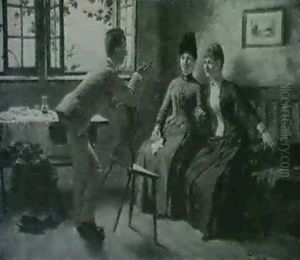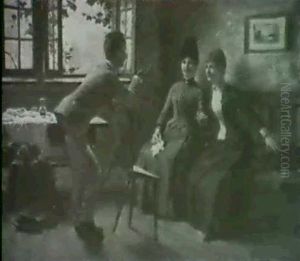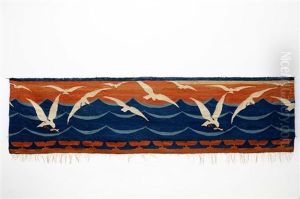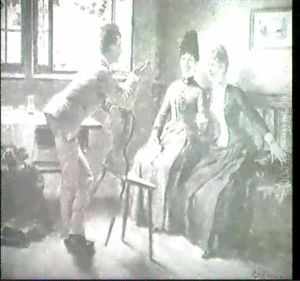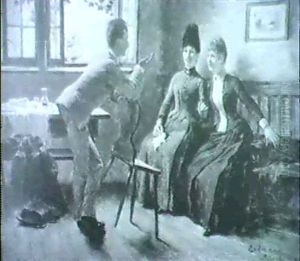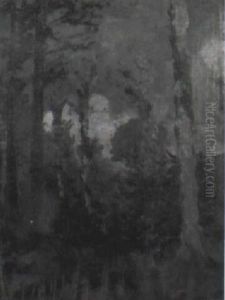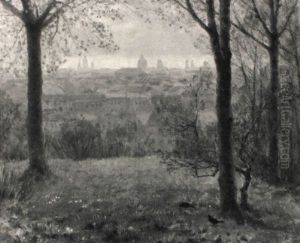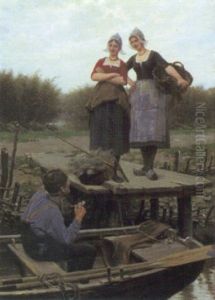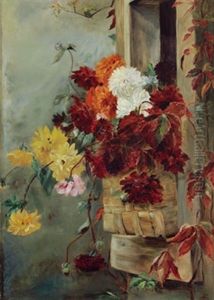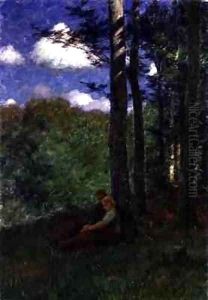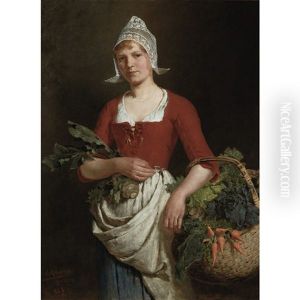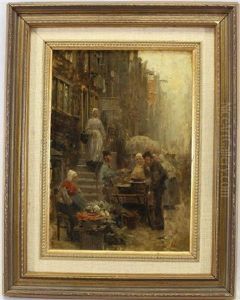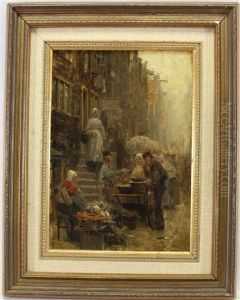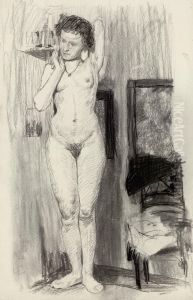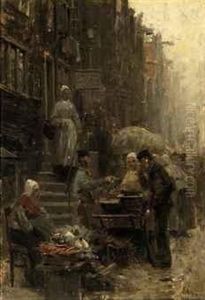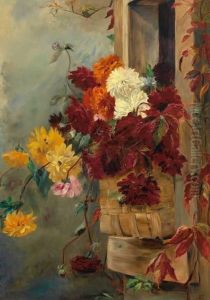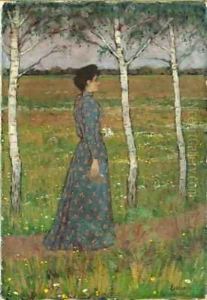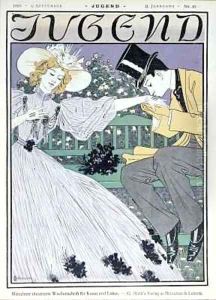Otto Eckmann Paintings
Otto Eckmann was a pivotal figure in the Jugendstil movement, the German counterpart to Art Nouveau, which sought to break away from the historicism and academic art styles dominant in the 19th century. Born on November 19, 1865, in Hamburg, Germany, Eckmann's early career was rooted in traditional painting. He was initially trained at the Hamburg School of Arts and Crafts before furthering his education at the Academy of Fine Arts in Munich, one of the most prestigious institutions in Germany for art studies at the time. His early work was influenced by the academic and historical styles prevalent during his education, but he soon found his unique voice that would mark his contribution to the world of art and design.
Eckmann's shift towards the Jugendstil movement marked a significant turn in his career. Influenced by the natural forms and structures, his work began to embody the essence of Art Nouveau, focusing on organic shapes, curved lines, and a harmonious blend of form and function. This transition was not just limited to his visual art; Eckmann made substantial contributions to the fields of typography and graphic design as well. He is perhaps best remembered for his innovative typefaces, which were inspired by the flowing, natural lines of the Jugendstil movement. His most famous typeface, Eckmannschrift, created in 1900, exemplifies the Art Nouveau style's influence on typography, featuring organic and natural forms that were radically different from the rigid and geometric shapes that characterized the typefaces of the 19th century.
Despite his profound influence on the development of modern design and typography, Otto Eckmann's career was tragically short-lived. He died on June 11, 1902, in Badenweiler, Germany, at the age of 36. In his brief life, he managed to leave an indelible mark on the art world, transitioning from a traditional painter to one of the leading figures in the Jugendstil movement. After his death, Eckmann's work continued to inspire generations of artists and designers, cementing his legacy as a pioneer of the Art Nouveau movement in Germany. His emphasis on the integration of art into everyday life, through objects of utility designed with aesthetic appeal, is a philosophy that continues to influence the design world.
